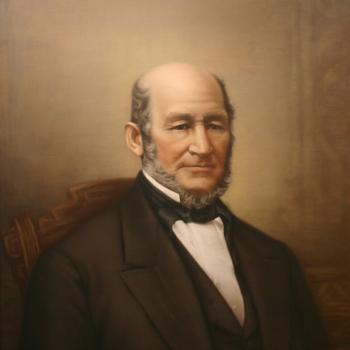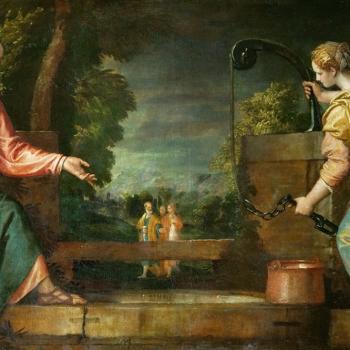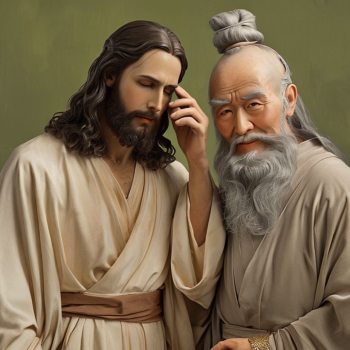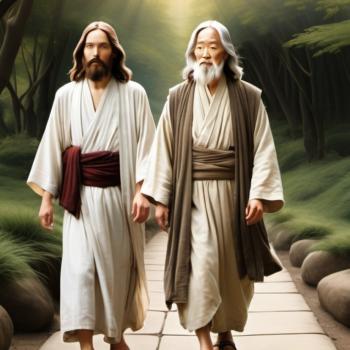In the resurrection, Jesus employed all five senses to display God’s grace. Whatever your learning style, Jesus will meet you where you live.

Sometimes we humans can be slow learners. That’s why God gave us five senses, so we can see, hear, smell, taste, and feel the world around us. The five senses help us to make sense of our existence. Each of these senses is instrumental in our learning.
Jesus Employed all Five Senses
Science tells us that most people major on one or two of the senses when it comes to their learning style. Some people are visual learners. Other people learn by listening. Still, others are kinesthetic learners, and they understand best when they can get their hands on something. In the resurrection, Jesus wanted to remove any doubt among his followers that he was alive again. For this reason, he employed all five senses to display his victory over death.
Sight
Perhaps the first and most obvious is the sense of sight. Of all the senses we rely on for information, most of us rely on sight first. So, it’s no wonder that the Bible focuses on Jesus’s resurrection appearances. Angels appeared to the women at the tomb, to declare Jesus’s resurrection. After that, Jesus showed himself visibly to the disciples.
When we talk about those who witnessed the resurrection, we generally refer to those who saw the resurrected Christ with their own eyes. The Bible refers to one event where Jesus showed up in front of more than five hundred people. Biblical writers wanted to communicate the incontrovertible fact of the resurrection as evidenced by the resurrected Christ that so many saw. If you’re a visual learner, Jesus has got you covered.
Hearing
When it comes to the five senses, after sight, hearing comes in a close second in importance. In terms of learning styles, many report that they are aural learners, more than visual. When the Jewish ruling council commanded James and John to stop preaching the gospel, they replied, “…We cannot keep from speaking about what we have seen and heard.” To ensure the disciples’ faith, Jesus made sure he employed both their sense of sight and their faculty of hearing.
Jesus was no near apparition, no silent phantasm or trick of the eye. Mary’s eyes deceived her at the cemetery, convincing her that she had met the gardener. But once she heard Jesus’ voice speaking her name, all illusion fell away. When her eyes failed her, her ears did not. Her sense of hearing confirmed that Jesus was indeed alive.
The resurrected Christ employed the women’s sense of hearing when he commissioned them as the first preachers of the resurrection.
Again, he employed his disciples’ sense of hearing when he appeared to them in the upper room and spoke shalom to their hearts.
Finally, Jesus expanded up upon the scripture as he walked with the two disciples on the way to Emmaus. While they did not recognize him visually, perhaps there was something about his words that made their hearts burn within them. Jesus knew that some of his followers were aural learners, so he made sure to accommodate their learning style.
Smell and Taste
Next, Jesus employed the senses of smell and taste to demonstrate his resurrection. As the disciples were fishing, perhaps their first inkling that the wind was changing came with the aroma of charcoal smoke and roasting fish. Perhaps this is what brought them into shore in the first place, driven by physical hunger and spiritual thirst. Even if their eyes and ears played tricks on them, Jesus made everything more tangible by engaging their senses of taste and smell. Combined, these two senses make a bountiful feast that will not soon be forgotten. This was no projection of God but a real flesh and blood resurrection. Jesus was alive enough to cook for them and to share a meal with his friends.
Touch
Jesus knows that some people are tactile learners. Read a book and they might forget the letters on the page. Hear a lecture and it might go in one ear and out the other. Tactile, or kinesthetic, learners employ their sense of touch to really wrap their brains around something.
When Jesus appeared to Mary, she clung to him for all she was worth—so much so that, with a chuckle, Jesus told her that she didn’t need to keep grasping after him. But perhaps she was a kinesthetic learner. And probably her love language was touch as well.
When Jesus appeared the first time to the disciples, Thomas was not there and missed the show. Disappointed and incredulous, he listened to the testimony of those who had seen the resurrected Christ. But he could not believe his ears or their eyes. “Unless I see the mark of the nails in his hands and put my finger in the mark of the nails and my hand in his side, I will not believe.” Later, Jesus offered him just that opportunity. He appeared a second time, perhaps specifically for Thomas’s benefit. Demonstrating his omniscience, he showed that he knew about Thomas’s statement. So, he allowed the disciple to feel the wounds in his hands and to put his hand into the wound in Jesus’s side. As a tactile learner, Thomas needed to wrap his hands around something in order to wrap his head around it—and Jesus was more than willing to accommodate.
Senses and Learning Styles
Each of us has a different learning style that majors on one or two of our five senses. Jesus employed all five senses so that his disciples could see, hear, smell, taste, and feel the truth of the resurrection.
How does God speak to you today? Through the beauty of a sunrise? Through the song of a loved one? Does the scent of a flower or the taste of fresh baked bread usher you into the presence of God? What about the invigoration of a workout or the texture of sand between your toes? Just as your five senses connect you to the world, they also connect you to God.
As the world awakens with the promise of spring, Christians celebrate resurrection and new life. I invite you to use all five of your senses so that you can perceive that God is alive and is with you. Take the time to develop intentional practices and Easter observances, involving each sense and each way of learning. Then, when you communicate faith with others, try to employ their senses and learning style so they can know the hope of the resurrection.


















